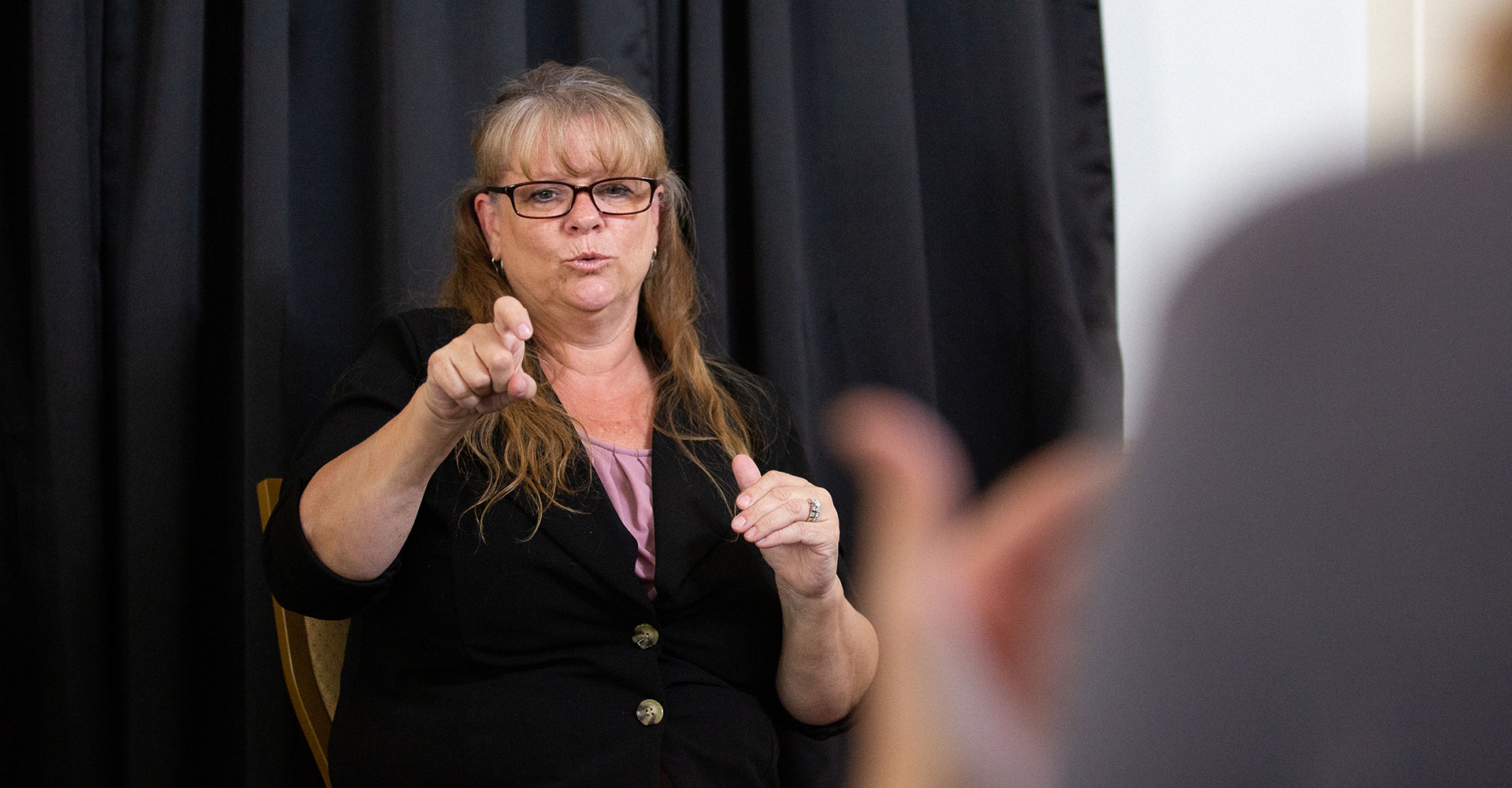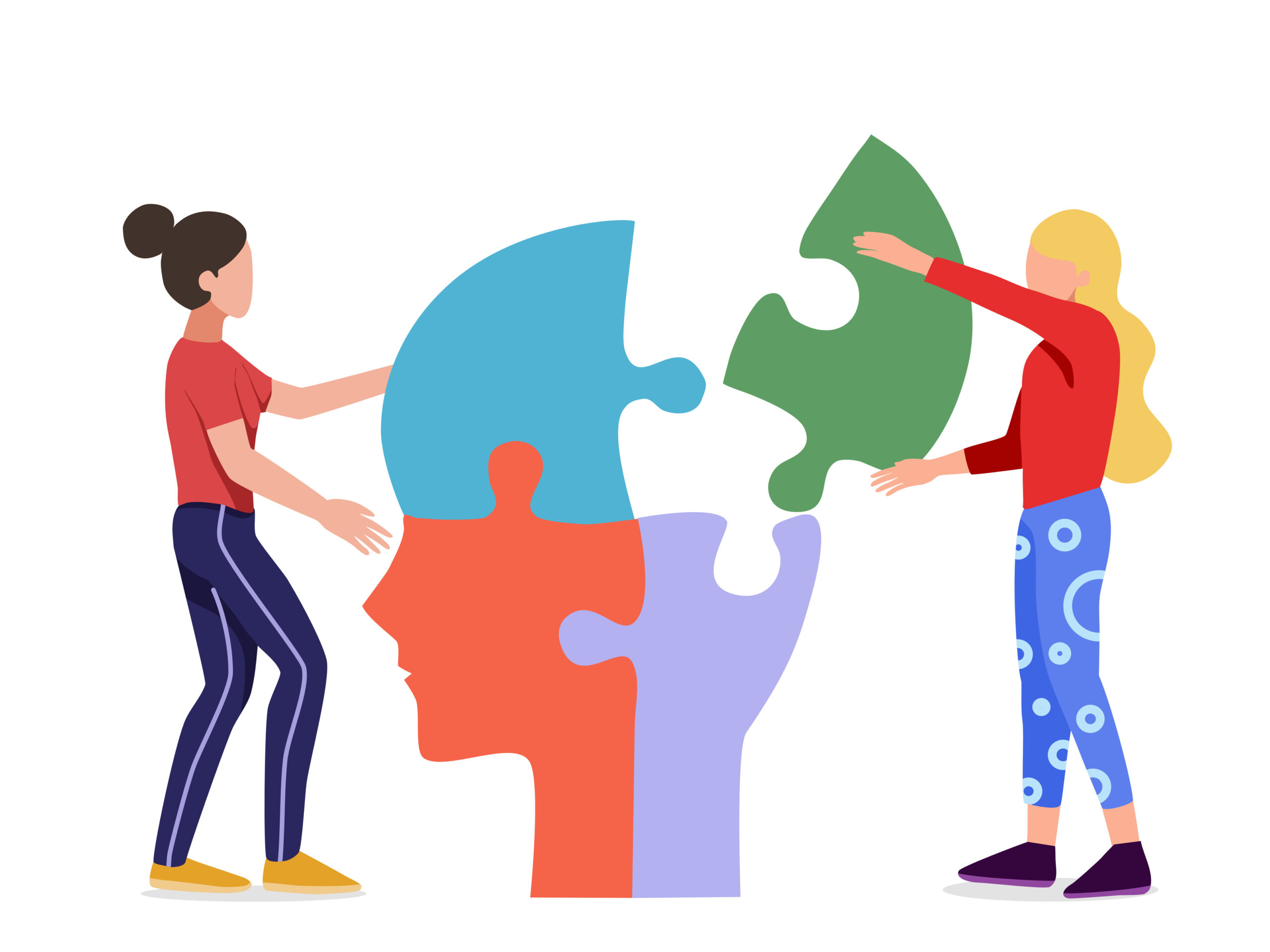Sign of the times
Mandy Pierce-Turner has a direct hand in communicating the governor's pandemic response to thousands of Coloradans who are deaf or hard of hearing.

If you’ve seen any of Gov. Jared Polis’s regular news conferences providing updates on the state’s response to the coronavirus pandemic, you may also be familiar with Mandy Pierce-Turner. From the beginning of the state’s response efforts, she has been translating the governor’s words into American Sign Language – a crucial role to ensure that an entire population is able to navigate a global pandemic.
An estimated 8.6% of the U.S. population, including nearly 470,000 Coloradans, are deaf or hard of hearing, according to the Colorado Commission for the Deaf, Hard of Hearing and DeafBlind.
“Imagine not knowing you need a mask to go into a store or, worse, if your spouse was admitted to an emergency room and not understanding why you couldn’t follow them back with the doctor,” said Pierce-Turner, auxiliary-services coordinator for the commission and a 2004 graduate of Metropolitan State University of Denver.
“COVID-19 is a serious disease,” she said. “The citizens of Colorado have both a legal and moral right to understand everything, regardless of their hearing ability.”

Pierce-Turner, who is deaf, is part of a relay circuit: The governor speaks facing a hearing interpreter, who signs in coded English to Pierce-Turner. She then interprets the words into ASL. And though captioning may be helpful, it’s an inaccessible solution for those who’ve never heard words spoken.
“People who are fully deaf can’t understand English – it’s not a visual language,” said Kimberly Harris, an ASL lecturer in MSU Denver’s Department of Modern Languages. “When they see the interpreter signing in ASL, however, they have access. And when they do, they can make decisions better.
“That matters, as coronavirus information is about life and death – if you don’t have access to that information, you don’t know what to do.”
Up to 90% of what is communicated is done nonverbally, Harris added. That’s why you’ll see interpreters signing and gesticulating without a mask. If viewers couldn’t see the eyes, eyebrows, nose and mouth moving in relation to one another, they might not understand what’s being said.
“Grammar is in the face in ASL,” Pierce-Turner said. “Having a mask on creates a communication barrier.”

Her dedication to full comprehension extends across the ability spectrum, too. Pierce-Turner specifically wears a contrasting wardrobe to assist low-vision individuals.
“It’s a complete interpretive process you need the entire body for,” she said. “You wouldn’t remove verbs from English.”
When Pierce-Turner graduated from MSU Denver with a degree in Criminal Justice and Criminology, she made history as the first deaf person in the program to do so.
“It was a fabulous experience,” she said. “I had interpreters in my classes, along with note-takers and screen annotations. I know it’s a requirement, but it was remarkable.”
Originally planning to become a probation officer, Turner took a sidestep that would turn out to be a separate, if tangential, career path. At the urging of a colleague, she became a courtroom interpreter, paired with a hearing interpreter to process ASL.
After graduating from MSU Denver, Pierce-Turner volunteered as a deputy probation officer for Arapahoe County for three years before starting in the role she holds today.

In normal times, her job involves scheduling interpreters for 22 district courts and state agencies, but demand for services boomed in the wake of COVID-19. It’s in part what landed Pierce-Turner her gig with the governor – and, subsequently, on our respective screens.
“Knowing ASL makes a person a hot item to employers. Plus, if students are visually oriented, it’s a piece of cake to learn,” Harris said.
Pierce-Turner added that opportunities for those fluent in ASL exist in many professions.
“Think about certified teachers and paraprofessionals in the classroom, or a police officer who has the ability to communicate with a deaf person they’ve pulled over,” she said. “Even simple, basic signs can help lower the stress of a situation dramatically.
“Wouldn’t it be nice if you just had someone who could ask, ‘Can I help you?’”







